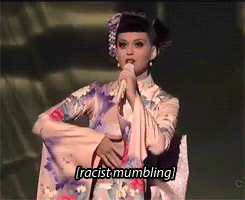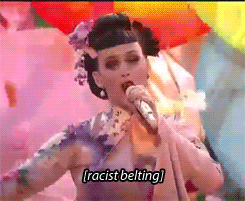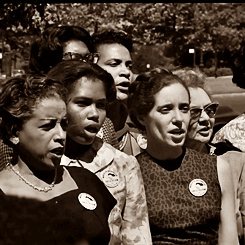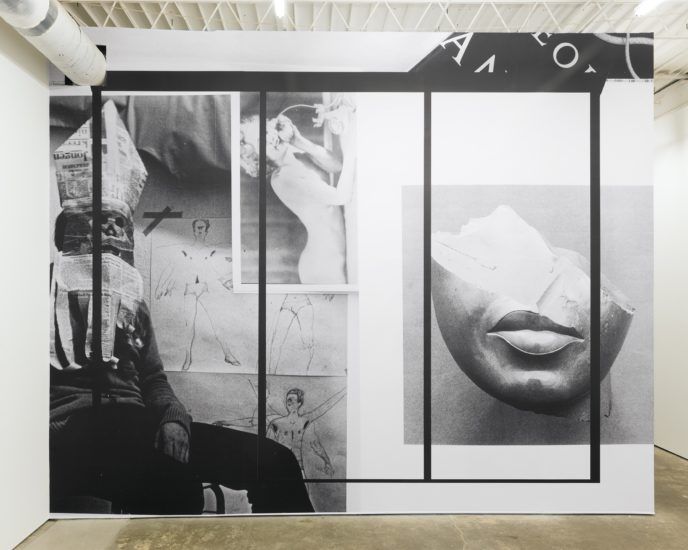A year ago, following an independent journalist’s crusade, immense public pressure, and a court order, Chicago police finally released video of an officer fatally shooting 17-year-old Laquan McDonald. Hours before its release, the officer was charged with first-degree murder. As soon as the video was made public, it was being published, downloaded, screengrabbed, and reblogged across news sites and social-media platforms. But if you were on Twitter that night and you follow the Daily Beast, you would have been exposed to McDonald’s death not as a story, a video, or a still, but rather as a tweeted gif.
The default for gifs on Twitter is to autoplay, and many users do not opt out. I was among them. There was no warning that I was about to see something graphic and disturbing, as there was on the cable networks that were also showing the video. The gif of McDonald’s death was instead indiscriminately injected in between my banal tweets about Thanksgiving prep. Unmoored from even minimal context, the gif felt cheap and tawdry, with each loop replay increasing some engagement metric, while righteously confronting nothing.
The Daily Beast’s action sparked immediate outcry among Twitter users and sites like the Root and Colorlines. For one thing, McDonald’s mother didn’t want video released. Her private grief was made public. But the gif took it even further, creating a grotesque play in which a young black man was always living his last moments, over and over again.
By collapsing time, creating a world with no beginning or end, gifs can reproduce trauma’s symptoms — feelings of isolation, repetition compulsion, and a state of bodily helplessness as your mind moves beyond your control. After trauma occurs, memories from the event can loop back and intrude on one’s consciousness days or years later, at the most inconvenient times, at the most innocuous suggestion. As Lori Daub describes in Testimony: Crises of Witnessing in Literature, Psychoanalysis and History, “Trauma survivors live not with memories of the past, but with an event that could not and did not proceed through to its completion, has no ending, attained no closure, and therefore, as far as its survivors are concerned, continues into the present and is current in every respect.” This is why years after being falsely accused of burglary, my mother still gets anxious at the sight of a police car, forced to relive the worst day of her life. It’s why for veterans with post-traumatic stress syndrome, war never ends. It’s why a gif that isolates Laquan McDonald’s fatal shooting into repeating frames is a decision that reproduces the emotionally isolating, never-ending trauma of black lives not mattering.
By collapsing time, gifs can reproduce trauma’s symptoms — feelings of isolation, repetition compulsion, and a state of bodily helplessness as your mind moves beyond your control
Shortly after the outcry about the McDonald gif, the site took the tweet down, with editor at large Goldie Taylor making this explanation, also in a tweet: “By tweeting a gif, we unintentionally trivialized a death. We are deleting.” (Her apology has since been deleted.)
The incident raises the question of whether gifs, simply by virtue of their formal qualities, are inherently trivializing. What effects does looping video of a news event have on what it represents and how it is consumed? Can a gif be serious?
Thanks to their engaging movement and internet-native feel, gifs have become ubiquitous across news sites and social media alike. Twitter and even old mainstays like Microsoft Outlook have added gif extensions, recognizing users’ need to communicate “facepalm” with a loop. In personal contexts, gifs are widely accepted as fun shorthand for such reactions: My friend texts me about her job; I answer with gifs of Kim Kardashian cry-faces. But there are limits. Even the editorial director of Giphy, a popular online gif repository, said, when asked what reaction gif he might send to someone who found out their sibling had died, that he’d rather give the person a call.
Similar limits seem to apply in news contexts. Gifs have become mainstays in sports and politics coverage because they can distill the essence of these competitions into a few arresting looped frames, as in this breakdown of the minutiae of how Olympic gymnast McKayla Maroney lost her gold. The 2016 presidential debates yielded a flood of gifs examining the minutiae of Donald Trump’s mouth breathing and Hillary Clinton’s blinking, on the idea that looping the slightest of gestures can reveal something surprising within the manicured machine of an election campaign.
Given the broad appeal of gifs, startups have sought ways to further distribute and monetize them. But the same liveliness, immediacy, and novelty that make gifs so attractive to startups and news organizations also make their use in more sober contexts jarring. When gifs delve into breaking-news tragedies — police shootings, natural disasters, terrorism — they tend to cross the fine line between confronting horror and exploiting it. Without the cushion of context, a gif can land like a punch. When Gawker posted a gif of a Spanish train derailing in 2013, readers said they felt unprepared for their visceral reaction. “I think gifs are for cats, not seeing the last moments of nearly a hundred lives,” one wrote.
Sometimes a visceral reaction is the point: Activists and journalists have long attempted to force people to visually confront the horrors of oppression and white supremacy. When Mamie Till-Mobley’s son Emmett was brutally murdered, she allowed his mutilated body to be photographed and published in Jet magazine, hoping to shock people out of their complacency. It was an intrusion into people’s daily lives to remind them to stay woke. In this same tradition, antique collector James Allen collected photos and postcards of lynchings across America, 145 of which were published in 2000 as Without Sanctuary: Lynching Photography in America. These revealed how racist spectacle was packaged and sold as keepsakes: “Lust propelled their commercial reproduction and distribution, facilitating the endless replay of anguish,” Allen notes. “Even dead, the victims were without sanctuary.”
The most powerful gifs work like comic books, whose panels “fracture both time and space, offering a jagged, staccato rhythm of unconnected moments” to achieve the rhythm of a story
But the images circulated of Laquan McDonald’s death are hard to assimilate to this tradition, and not only because his mother did not authorize their distribution. In its gif form, the disturbing video of his death had become a puppet show, and McDonald a marionette, made to rise and fall, ridden with bullets 16 times, then 32, then 48, and on and on. Unlike a video clip, which is buffered by a lead-up and at least has an end point, a gif isolates the most traumatic moments and continues replaying them indefinitely, without warning and without your permission.
To be marked in this way in American culture — to be looped in a gif, to be put on display as “animated” at the behest of audiences — is, as Laur Jackson has argued (following Sianne Ngai), to be racialized, othered:
On one hand, one’s humanity is conditional on the capacity to be animated — for bodies to whom humanity is not a given. On the other literal hand, a body animated looks utterly unnatural, puppet-like, revealing the desperation and labor underlying the humanizing project as well as turning “the racial body … into comic spectacle,” to quote again from Ngai.
For black bodies, being “animated” — a condition that gifs, by nature of their form, automatically impose — already marks you as other. Ngai analyzed how Harriet Beecher Stowe’s characters in Uncle Tom’s Cabin were purposefully written with animated vernacular to racialize their speech and provoke white readers’ empathy. But it’s a hollow caring, because these bodies have been marked for others to use. On an infinite loop in gifs, this hyperanimation re-enacts the spectacle for our consumption, puppets made to rise and fall, victims without sanctuary. They mimic Allen’s lynching postcards, but without the critical context his curation and commentary provides. In looping, the larger context is cropped out and we are left with only the most inflammatory, most affecting moment. This distillation, by definition, exploits and subtracts the context to extract an event’s viral essence.
These looping spectacles seem to deny that the bodies on display have minds, that they have subjective integrity. Similarly, Ngai, in commenting on Sasha Torres’s 1990s-era discussion about how people of color were depicted on live TV, points out how the affect of “liveness” in the medium depends on appropriating black experience and offering it as a commodified object. As we speed toward new technologies that promise even more immediacy, gifs like the one depicting McDonald’s death serve as case studies on what not to do. Perpetually suspended between two states, gifs of black death are both alive and not alive. They should remain in purgatory, unseen.
Gifs have a far different effect than mere single-play video. It’s the looping that gives gifs their life. But given the troubling ramifications of how gifs Pinocchio subjects and intensify their objectification, can they be used to bear witness? Is, say, looping cute images of cats really the only ethically acceptable use for cultural gifs?
As Tumblr fan communities have long understood, there are political uses for gifs that rely on remixing rather than merely reiterating. Bringing together multiple images from different sources into a gif set can create a new vision that is as effective as any isolated news gif could ever be.
The most powerful gifs use the power of repetition and timing and spacing to persuade you to believe in something more than the sum of its repeated parts. In this, they work like comic books, whose panels, as Scott McCloud wrote in Understanding Comics, “fracture both time and space, offering a jagged, staccato rhythm of unconnected moments” in order to achieve the rhythm of a story. By animating images and words in side-by-side boxes, gif sets similarly invite us to bridge the gaps between the real and the imagined, presenting utopian possibilities and creating alternatives to the dominant modes of seeing the world. A good gif maker understands that there are many truths and use all the tools gifs put at their disposal — moving images, spacing, overlaid text, timing — to give their version convincing context.
Where photos hold memories frozen rictus-still and videos put directors at the mercy of B-roll footage, gifs cut straight to the heart of the action. The spaces between gifs in gif sets invite not confusion at the lack of continuity but viewer participation in sewing the story together. The frames are both moving and held in place; they capture attention with their dynamism and like a comic book, each frame builds upon the momentum of the previous one.
Yes, you could write a long essay about why Beyoncé’s self-titled album was a game changer for the music industry — but you can also sum up your feels succinctly in a gif. You can sum up rage too. Katy Perry’s racist performance at the 2013 American Music Awards can get remixed by a gif maker who edits out her lyrics and overlays gifs of her Orientalist performance with text reading “racist mumbling” and “racist belting.”


(source: starsapphire)
Potentially more patient and more open than media products with end points, looping gifs, given the right non-sensationalized context, can teach us to dwell and pay attention to the emotional reality within moving bodies that inhabit the frames. Watching an entire TV season compressed into the most meaningful frames of contact between characters, it becomes clear that the written and spoken word is not always needed — bodies betray desires. If you don’t notice how characters’ hands brush against each other, a gif forgives you and rewinds the story once more.
Before Tumblr, before LiveJournal, before I could AIM chat fan theories to my friends, I would lay down in the back of Mami’s van on long road trips, close the end of a book, and dream up better alternatives to what the canon provided me. Once you dare to accept, as Hilton Als has said, that reality itself is a form of fiction, you are no longer just a participant in a story. You are free to be your own creator, and you can begin to reshape dominant narratives. Now, in gif sets, these sorts of alternatives proliferate. There are black Tony Starks, female Doctor Whos, and Harry Potter worlds set in 1920s Harlem.
These are examples of racebending, a clapback to whitewashing, that responds to all-white casting by imagining people of color into the stories that they were written out of. It embodies media theorist Henry Jenkins’s claim that fan fiction can repair “the damage done in a system where contemporary myths are owned by corporations instead of owned by the folk.” Exposing the structured absence of people of color in media by fixing it yourself becomes a visual indictment on behalf of every person the original creators failed to include.
The frames are both moving and held in place; they capture attention with their dynamism while each frame builds upon the momentum of the previous one
Unlike a video clip, a gif invites you to sit, watch the world respool, and let your mind wonder: What if? What if Aldis Hodge portrayed Tony Stark? Or as the tags to this gif set on Tumblr framed it, #because like imagine being a little black boy growing up so so so smart and so so so alone. Or in the words of another user’s reblogging endorsement: #GOD#YES #you just never see a POC in that kind of archetype #tony stark is a power fantasy reserved for white men.
A good racebent gif set visualizes a world for fans to build upon and makes it more immediate than text-only fan fiction. As an online-native media form, gifs are born ready to be circulated, and on a platform like Tumblr, the story they convey gets chewed, reblogged, and remade better in collaboration.
#Memehistory, an idea started by @TylerIAm in March, uses gifs to make resonances between past actions and potential echoes in the present. Pairing a gif of the superhero Black Panther running with a caption about Jesse Owens outrunning his white competition at the 1936 Olympics brilliantly re-imagines a world that should have been, in which Owens is acknowledged as the superhero President Roosevelt never admitted he was.
Gif makers can also be post-production editors that make arguments about who gets centered in the frame. On Tumblr, theladybadass created gifs of the 1963 March on Washington, amazingly condensing the 15-hour event into nine loops, each of which holds women as central: women splashing their feet, women fixing their caps, women singing together, always present.


(source: theladybadass)
“Women, particularly women of color, are so often ignored that I wanted to create a space specifically for them,” Tabitha Bianca Brown, the creator of theladybadass, explained. By distilling her argument into its sharpest frames, her gif set becomes an intervention into the too-often ignored presence of women in the Civil Rights Movement. Each looping replay anchors you deeper in the past, bringing it closer to our present.
We already know that words are untrustworthy, that there are gulfs between what we mean and say. It can seem to take a man shooting a boy who’s already on the ground to give himself away. A police dashboard camera video that’s missing audio and time logs shows that videos are no more pure representations of truth than gifs and are subject to just as much manipulation — more dangerous, given that it is not as obvious.
A powerful gif masters the fraught spaces in our subconscious, manipulating the eye to see beyond our boxed imagination. With each loop, the heartbeat gets louder and we get closer to believing the gif is alive. It puts your hand on the pulse. You see visions of better futures. You see ghosts.
In the case of traumatizing gifs like that of the killing of Laquan McDonald, they are like Frankenstein’s monster: a poor decision made by human hands that does not reinvent the future or inform the present but rather, crudely reduces a boy’s humanity into jerkily moving parts.
But in skilled hands, a gif can be magic. Recognizing this, Giphy CEO Alex Chung and Paul Pfeiffer presented Giphnosis in 2013 at Rhizome’s Seven on Seven conference in New York to call attention to how minds are reprogrammed through gifs. “Giphnosis is happening. It’s called news media,” Pfeiffer said. Using the looping image that the New York Times posted of the Boston Marathon bombers on its website as an example, Chung explained that watching that image over and over “has a pronounced effect on the way you think about the world, [the way] you think about people in backpacks … We’re being constantly programmed by media, by everything on the internet, because everything now is looped.”
To counterbalance this looping horror, the pair offered Giphnosis, a (now defunct) website for users to download screensaver gifs designed to condition you toward and away from particular emotions. Pfeiffer said he was inspired by how he thinks dreams prepare oneself against danger.
When the idea of gifs was presented as self-help therapy, the audience laughed. But that’s because the full power and danger within a loop has yet to be fully appreciated. The powerful magic or potential curse of a gif is in what it dares you to imagine, and what it can convince you to believe. Now you see me, now you don’t. We’re just getting started.
